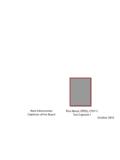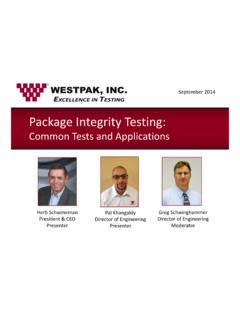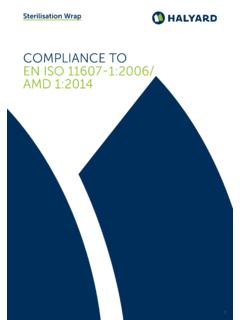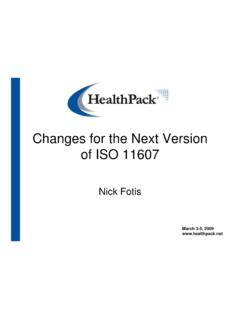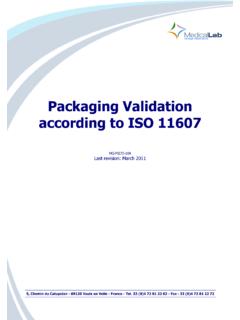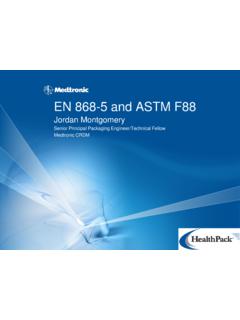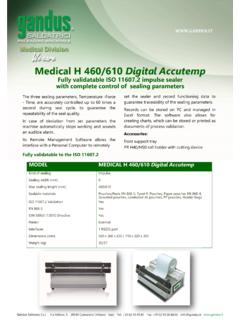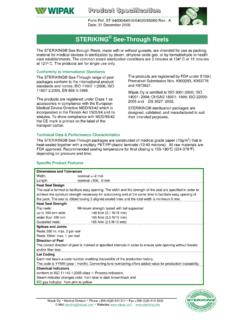Transcription of Arrhenius Equation Demystified - Westpak
1 Jorge CamposEngineer IIPresenterHerb Schueneman President & CEOP resenterArrhenius Equation DemystifiedHistory, Background, and Common Usage in the Accelerated Aging of Packaging for Medical DevicesNovember 2014 Agenda ISO 11607 & the Requirement for Accelerated Aging Shelf Life Validation Meet Svante August Arrhenius The Arrhenius Equation The Arrhenius Equation Modified The Arrhenius Equation As Used in Medical Device Accelerated Aging How About Humidity and Other Interesting Topics?2 ISO 116073 ISO 11607 -12006-04-15 Packaging for Terminally Sterilized Medical DevicesPart 1 REQUIREMENTS FOR MATERIALS, STERILE BARRIER SYSTEMS AND PACKAGING SYSTEMSISO 116074 Introduction The goal of a terminally sterilized medical device packaging system is to: A) allow sterilizationB) provide physical protectionC) maintain sterility up to the point of useD) allow aseptic presentationThe specific nature of the medical device, the intended sterilization methods(s), the intended use, expiry date, transport and storage all influence the packaging system design and choice of materials.
2 ISO expiry date ..indication of the date, by which the product should be used, expressed at least as the year and validation .. general confirmation by examinationand provision of objective evidence that the particular requirement for a specific intended use can be consistently ISO 1160766 Design and Development Requirements for Packaging The sterile barrier system shall maintain sterility until the point of use or until the expiry The design and development of a package system shall consider many factors that include, but are not limited to:i) expiry datelimitations of the productISO Stability Stability testing shall demonstrate that the sterile barrier system maintains integrity over Stability testing shall be performed using real-time Stability testing, using accelerated aging protocols, shall be regarded as sufficient evidence for claimed expiry dates until data from real-time aging studies are Real-time and accelerated aging tests should begin Stability testing and performance testing are separate entities.
3 Performance testing evaluates the interaction between the packaging system and the products in response to the stresses imposed by the manufacturing and sterilization processes and the handling, storage and shipping When expiry dates are based upon product performance, stability testing for expiry dating should be conducted along with package stability If accelerated aging tests are performed, a documented rationale for the accelerated aging conditions and test duration chosen shall be 1160797. Information to be the expiry date, if applicable; any specific storage conditions, if applicable; Packaging materials and preformed sterile barrier systemsAccelerated aging ASTM F1980:2002 Standard guide for accelerated aging of sterile medical device packagesEN 868-8:1999 Packaging materials and systems for medical devices which are to be sterilized Part 8: SHELF LIFE VALIDATION10 Most Acceptable MethodAccelerated aging validated with Real-Time aging.
4 Complies with: ISO Stability testing shall be performed using real-time Stability testing, using accelerated aging protocols, shall be regarded as sufficient evidence for claimed expiry dates until data from real-time aging studies are LIFE VALIDATION11 ASTM F1980 agrees: Real-time aging protocols are not addressed in this guide; however, it is essential that real-time aging studies be performed to confirm the accelerated aging test results using the same methods of evaluation. When elevated temperature aging is not feasible due to material characteristics, then real-time aging is the only of Accelerated Aging at Various Temperatures and Equivalent Real Time Aging12 Accelerated Aging (55 C)DaysAccelerated Aging (50 C) DaysAccelerated Aging (60 C) DaysReal-Time Aging (23 C) 14790 yearsWho Was This Arrhenius Dude?
5 13 Svante August Arrhenius Born:19 February 1859, Vik, Sweden Died:2 October 1927, Stockholm, Sweden Affiliation at the time of the award:Stockholm University, Stockholm, Sweden Field:chemical kinetics, physical chemistry Nobel Prize, Chemistry:"in recognition of the extraordinary services he has rendered to the advancement of chemistry by his electrolytic theory of dissociation"Svante Arrhenius Interesting Facts 14 He considered radiation pressure as accounting for comets, the solar corona, the aurora borealis, and zodiacal light. He thought of the idea of a universal language, proposing a modification of the English language. Developed a theory to explain the ice ages, was the first scientist to attempt to calculate how changes in the levels of carbon dioxide in the atmosphere could alter the surface temperature through the greenhouse effect.
6 First person to predict that emissions of carbon dioxide from the burning of fossil fuels were large enough to cause global warming. The Arrhenius Equation 15 The Arrhenius equationis a simple but remarkably accurate formula for the temperature dependence of reaction rates. Arrhenius ' Equation gives the dependence of the rate constant kof a chemical reaction on the absolute temperature T (in kelvin), where A is the pre-exponential factor (or simply the prefactor), Ea is the activation energy, and R is the universal gas constant:The Arrhenius Equation (con t) 16 Most simply, is the number of collisions that result in a reaction per second, is the total number of collisions (leading to a reaction or not) per second and is the probability that any given collision will result in a reaction.
7 It can be seen that either increasing the temperature or decreasing the activation energy (for example through the use of catalysts) will result in an increase in rate of reaction. The Arrhenius Equation (con t) 17 = ActivationenergyRelation between Arrhenius and AgingHow do we go from:To: 18?Combining Two Arrhenius equations Let s start by combining two first order Arrhenius equations to understand the relationship between the reaction rate and temperature19 Combining Two Arrhenius equations Con t Next, let s take the natural log of each side of the Equation Next, let s use the natural log product rule20 Since ln( )= x Next, let s make both equations equal to ln (A)21 Combining Two Arrhenius equations Con tCombining Two Arrhenius equations Con t Since both equations are equal to ln(A)
8 , then Let s rearrange the Equation in the following manner 22 Combining Two Arrhenius equations Con t23 Let s use the natural log quotient rule Now, let s separate the factor Relationship between and If !"= 2 !#= 1 $ $ = 2 %& ' ( )*+,- ,'./ ,+0/ 1# './23 1" +0/23 Then, T = 10 K (or 10 C) R = 4567 89: /,*)/;/0 !<=>%Relationship between and con t $ $ rate doubles only if 9:; /0 $4567 If 1# './2?and 1" +0/2?remain constant $ $ increases as 9:increases25 Relationship between and con Energy (kJ/mol)Effects of a Activation Energy IncreaseTemperature and 27012345k2/k1 Avg Temp ( C) in Interval)Effects of Average Temperature IncreaseEa = 50 kJ/molAt +22 C with 50 @@@@/AAAABBBB and with a T = 10 C, the reaction rate doubles!
9 The Arrhenius Equation Modified28 So, from all of this, how do we determine the AAF formula? From the Arrhenius Equation , we now know that the rate of reaction $ $ doubles which, in our terms, represent C#D= 2, when we have a T = 10 C with an activation energy ; EF @AB The Arrhenius Equation As Used in Medical Device Accelerated Aging Summary (ASTMF1980) .. assumes that the chemical reactions involved in the deterioration of materials follow the Arrhenius reaction rate function.. A 10 C increase in temperature of a homogeneous process results in, approximately, a two times change in the rate of a chemical reaction (G F). Determining theG Finvolves testing materials at various temperatures and defining the differences in reaction rate for a 10 C change in temperature.
10 The Arrhenius Equation As Used in Medical Device Accelerated Aging Summary (ASTMF1980)30[ASTM F1980] ..chemical reactions involved in the deterioration of materials follow the Arrhenius reaction rate function. [Observation] deterioration of materials is never mentioned in the original Arrhenius Equation , only the rate of a chemical Arrhenius Equation As Used in Medical Device Accelerated Aging Summary (ASTM F1980)31[ASTM F1980] .. a 10 C increase in temperature of a homogeneous process results in, approximately, a two times change in the rate of a chemical reaction (G F).[Observation] This comes from solving for ( ) when ( ) = 10 C for a slow rate (homogeneous) , exactly what is a: 32 slow rate (homogeneous) process ?

